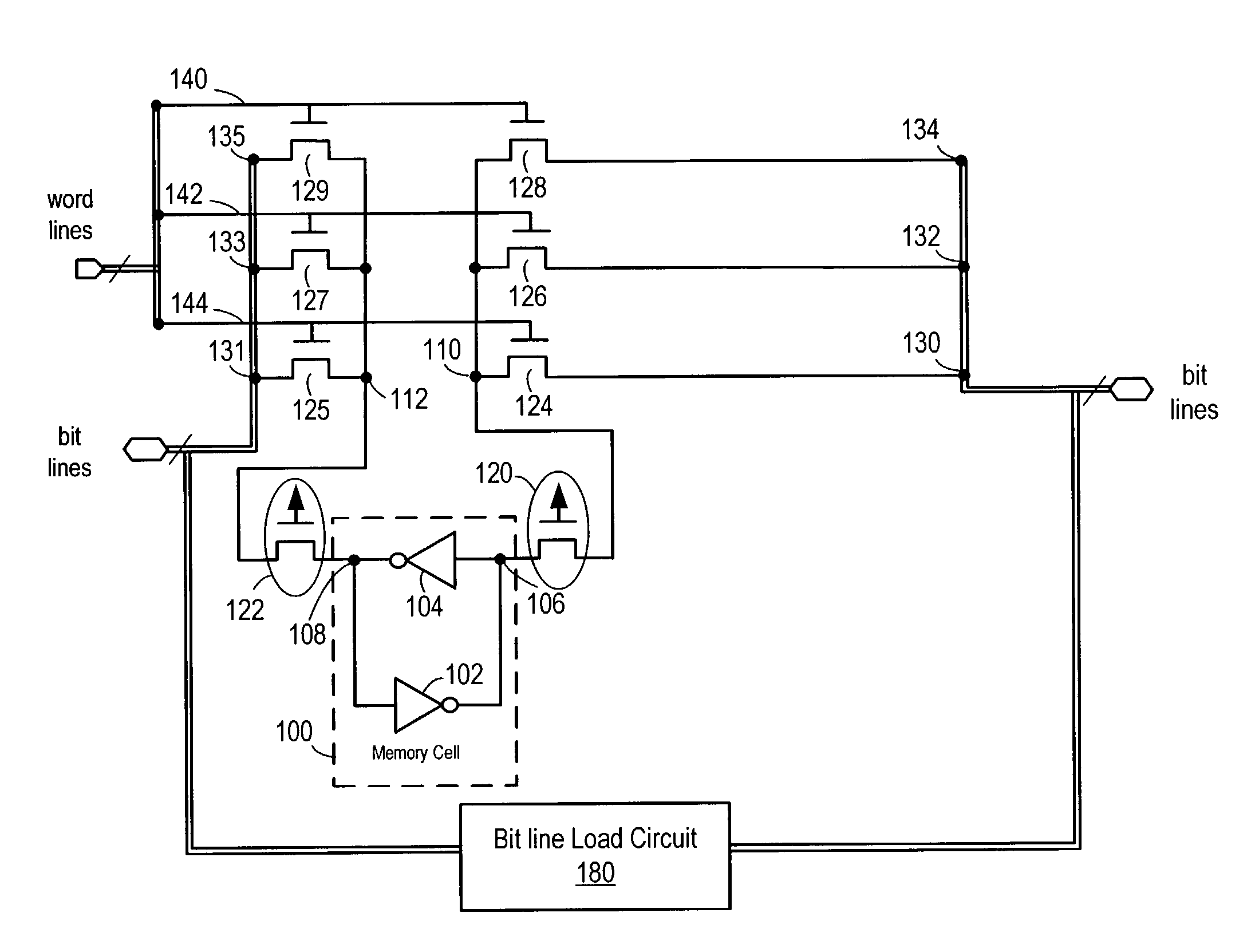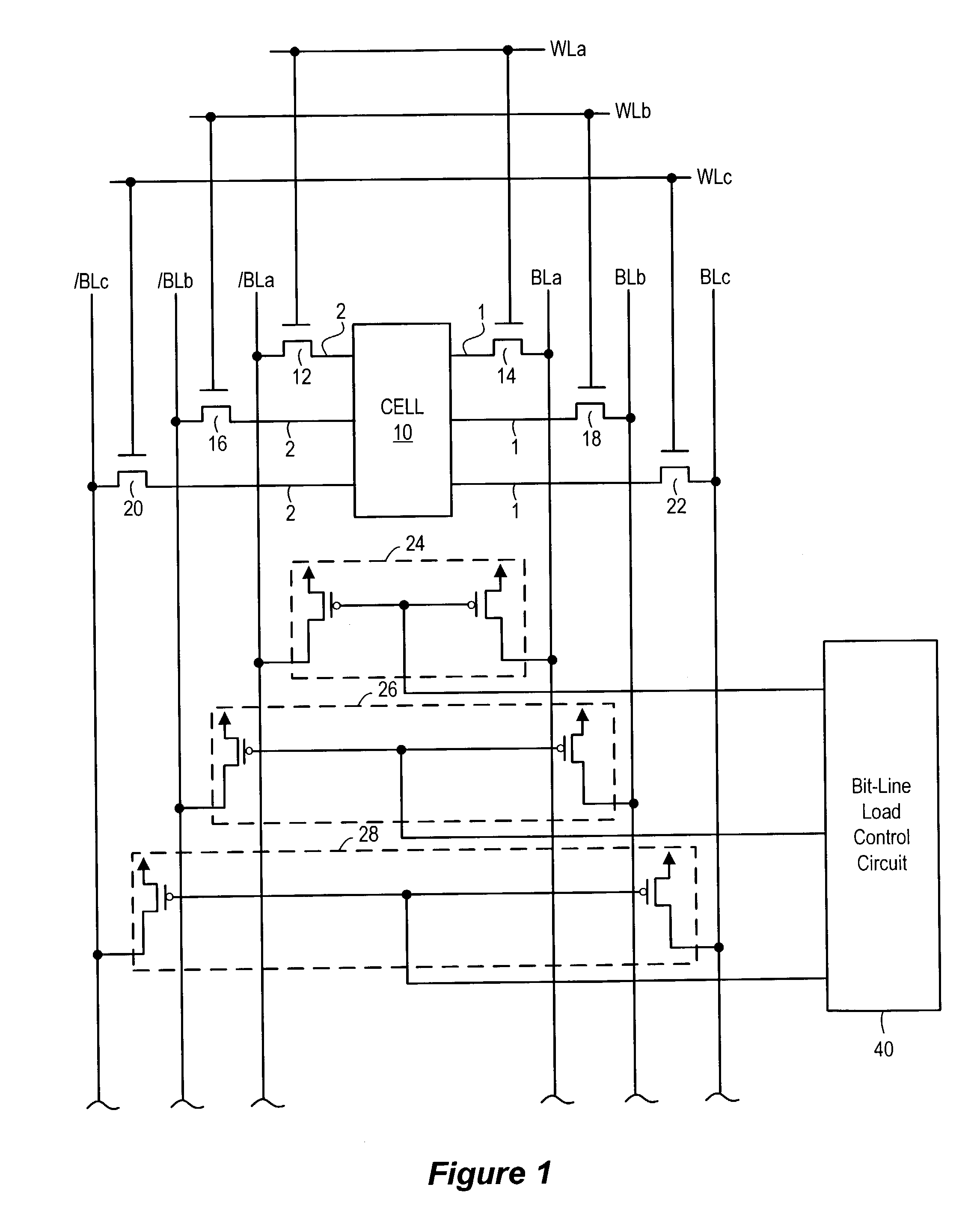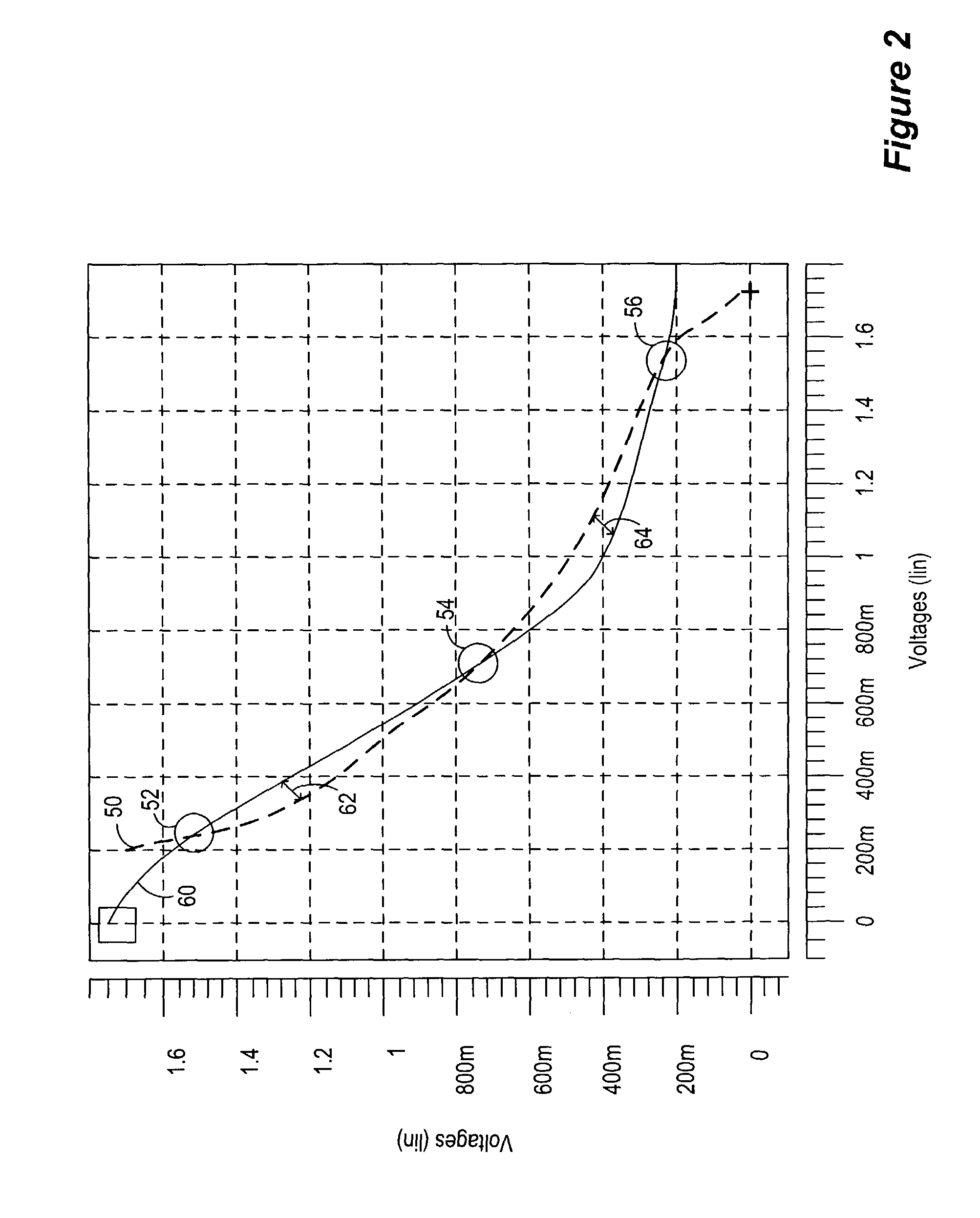Multi-ported memory cell
a memory cell and multi-port technology, applied in the field of digital electronic circuits, can solve the problems of essentially no stability for the 4-port memory device, difficult to have both stability and writability for the multi-port cell, etc., and achieve the effect of enhancing the operation margin and improving the beta-ratio
- Summary
- Abstract
- Description
- Claims
- Application Information
AI Technical Summary
Benefits of technology
Problems solved by technology
Method used
Image
Examples
Embodiment Construction
[0024]In addition to providing a memory design that is stable (in terms of retaining the data content stored in the memory cell), there is a competing and potentially conflicting need for writability that must be balanced in the memory design. For example, memory stability is promoted by having smaller transfer or access gate sizes and larger NMOS gate sizes in the memory cell inverters. The ratio of these sizes is referred to as the beta-ratio, which is bigger for more stable memory designs, meaning that the NMOS driver gate in the memory cell inverters is larger and the transfer gate is smaller. However, with multi-port memories, the effective increase in the transfer gate size (because of the additional transfer gates for the additional ports) reduces the beta-ratio, meaning that the cell stability is diminished. Thus, to obtain stable memory cell operation, there is minimum beta-ratio value required for memory cell stability.
[0025]At the same time, cell writability is improved w...
PUM
 Login to View More
Login to View More Abstract
Description
Claims
Application Information
 Login to View More
Login to View More - R&D
- Intellectual Property
- Life Sciences
- Materials
- Tech Scout
- Unparalleled Data Quality
- Higher Quality Content
- 60% Fewer Hallucinations
Browse by: Latest US Patents, China's latest patents, Technical Efficacy Thesaurus, Application Domain, Technology Topic, Popular Technical Reports.
© 2025 PatSnap. All rights reserved.Legal|Privacy policy|Modern Slavery Act Transparency Statement|Sitemap|About US| Contact US: help@patsnap.com



